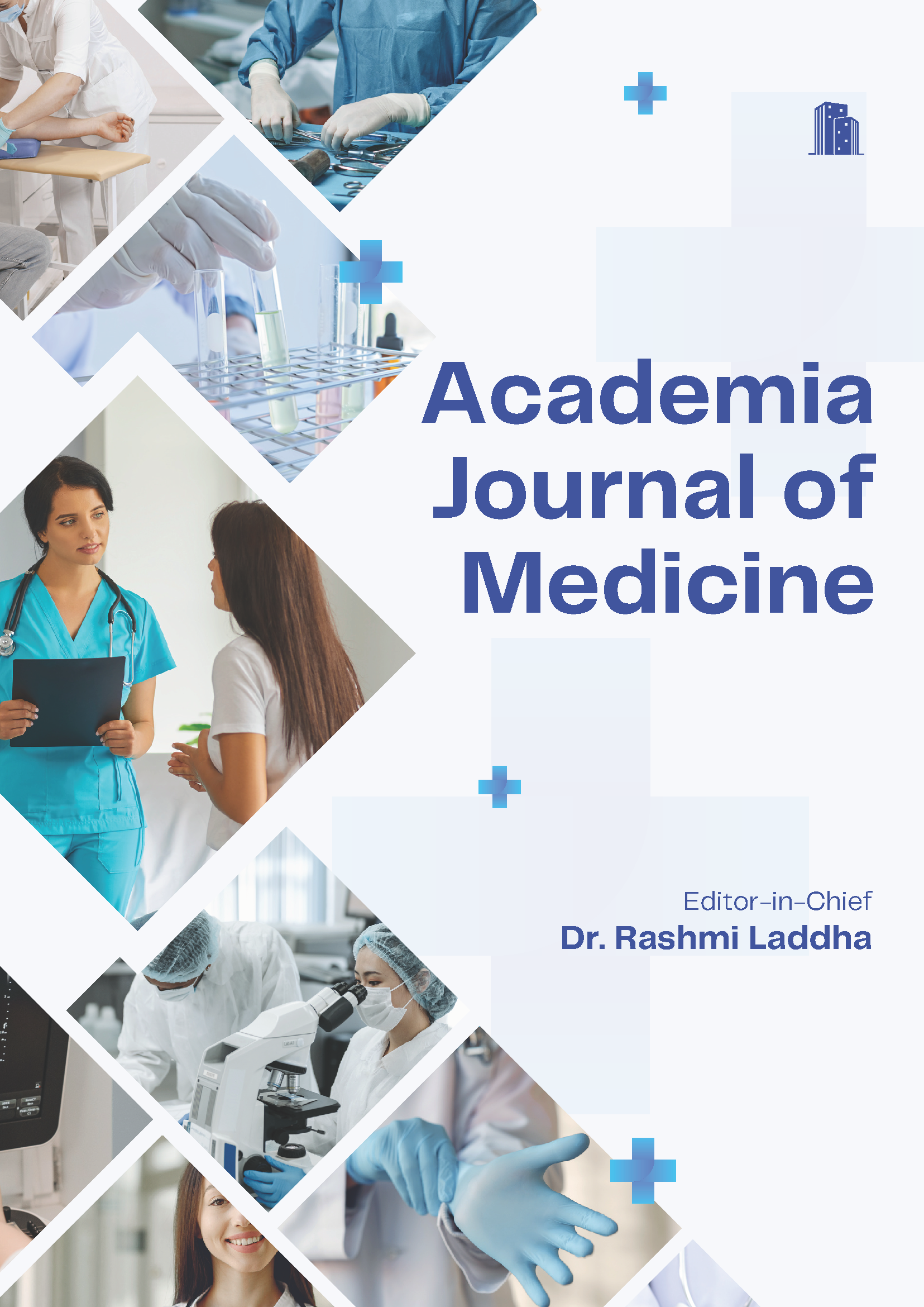Developing a Vaccine for Rheumatic Fever and Rheumatic Heart Disease: Current Research Strategies and Challenges
DOI:
https://doi.org/10.48165/yaxv5c72Keywords:
Group A Streptococcus (GAS), Rheumatic Heart Disease (RHD), VaccineAbstract
Rheumatic heart disease (RHD) is the most serious manifestations of rheumatic fever, which is caused by group A Streptococcus (GAS or Streptococcus pyogenes) infection. RHD is an auto immune sequelae of GAS pharyngitis, rather than the direct bacterial infection of the heart, which leads to chronic heart valve damage. Although antibiotics like penicillin are effective against GAS infection, improper medical care such as poor patient compliance, overcrowding, poverty, and repeated exposure to GAS, leads to acute rheumatic fever and RHD. Thus, effort to design a vaccine based on emm gene identification of GAS, M-protein going on for more than 40 years, is unlikely to succeed. M-protein is strain specific. Infection with one strain does not provide immunity from infection with another strain. Based on the emm gene identification, of 250 or more identified strains of GAS, the distribution is heterogenous and keeps changing. The M-protein gene sequence of the organism tends to mutate. A vaccine prepared from available strains may not be effective against a strain following mutation.
References
1. Veasy LG. Lessons learned from the resurgence of rheumatic fever in the United States. In: Narula J, Virmani R, Reddy KS, Tandon R, eds. Rheumatic Fever. Washington DC: Amer Registr of Path AFIP; 1999:69e78
2. Tandon R, Preventing rheumatic fever : M- protein based vaccine, Indian Heart Journal 2014; 66: 64-67
3. WHO-Group A Streptococcus Vaccine Development Technology Roadmap, 2018.
4. (https://apps.who.int/iris/bitstream/handle/10665/279392/WHO-IVB- 18.08-eng.pdf)
5. Vekemans J, Gouvea-Reis F, Kim JH, Excler JL, SmeestersPR, O’Brien KL, “The path to group A Streptococcus vaccines, 2018 WHO research and development technology roadmap and preferred product characteristics, Infectious Diseases Society of America 2019.
6. Cunningham MW. Pathogenesis of group A streptococcal infections. Clin Microbiol Rev. 2000;13(3):470–511.)
7. He Y, Xiang Z, Mobley HL. Vaxign: The first web-based vaccine design program for reverse vaccinology and applications for vaccine development. J Biomed Biotechnol. 2010;2010297505.
8. Vivona S, Gardy JL, Ramachandran S, Brinkman FS, Raghava GP, Flower DR, et al. Computer-aided biotechnology: From immuno- informatics to reverse vaccinology. Trends Biotechnol. 2008;26(4):190_200.
9. Sette A, Rappuoli R. Reverse vaccinology: Developing vaccines in the era of genomics. Immunity. 2010;33(4):530-41.
10. Vivona S, Bernante F, Filippini F. NERVE: New enhanced reverse vaccinology environment. BMC Biotechnol. 2006;635.
11. Muzzi A, Masignani V, Rappuoli R. The pan-genome: Towards a knowledge-based discovery of novel targets for vaccines and antibacterials. Drug Discov Today . 2007;12(11-12):429-39.
12. Donati C, Rappuoli R. Reverse vaccinology in the 21st century: Improvements over the original design. Ann N Y Acad Sci. 2013;1285:115-32.
13. Gandhi GD, Krishnamoorthy N, Motal UMA, Yacoub M. Towards developing a vaccine for rheumatic heart disease, Global Cardiology Science and Practice 2017:4
http://dx.doi.org/10.21542/gcsp.2017.4/dx.doi.org/10.21542/gcsp.2017
.4
14. Delany I, Rappuoli R, Seib KL. Vaccines, reverse vaccinology, and bacterial pathogenesis. Cold Spring Harb Perspect Med. 2013;3(5):a012476.
15. Courtney HS, Hasty DL, Dale JB. Serum opacity factor (SOF) of Streptococcus pyogenes evokes antibodies that opsonize homologous and heterologous SOF-positive serotypes of group A streptococci. Infect Immun. 2003;71(9):5097-103.
16. Stalhammar-Carlemalm M, Areschoug T, Larsson C, Lindahl G. The R28 protein of Streptococcus pyogenes is related to several group B streptococcal surface proteins, confers protective immunity and promotes binding to human epithelial cells. Mol Microbiol. 1999;33(1):208-19.
17. Huang YS, Fisher M, Nasrawi Z, Eichenbaum Z. Defense from the Group A Streptococcus by active and passive vaccination with the streptococcal hemoprotein receptor. J Infect Dis. 2011;203(11):1595- 601i GD, Krishnamoorthy NMota
18. Pandey M, Batzloff MR, Good MF. Vaccination against rheumatic heart disease: A review of current research strategies and challenges. Curr Infect Dis Rep. 2012;14(4):381-90.
19. Dale JB, Penfound TA, Chiang EY, Walton WJ. New 30-valent M protein-based vaccine evokes cross-opsonic antibodies against non- vaccine serotypes of group A streptococci. Vaccine. 2011;29(46):8175-8.
20. Sanderson-Smith M, Oliveira DM, Guglielmini J, McMillan DJ, Vu T, Holien JK, et al. A systematic and functional classification of Streptococcus pyogenes that serves as a new tool for molecular typing and vaccine development. J Infect Dis. 2014.
21. Courtney HS, Hasty DL, Dale JB. Serum opacity factor (SOF) of Streptococcus pyogenes evokes antibodies that opsonize homologous and heterologous SOF-positive serotypes of group A streptococci. Infect Immun. 2003;71(9):5097-103.
22. Postol E, Alencar R, Higa FT, Freschi de Barros S, Demarchi LM, Kalil J, et al. StreptInCor: A candidate vaccine epitope against S. pyogenes infections induces protection in outbred mice. PLOS One. 2013;8(4):e60969.
23. Sekuloski S, Batzloff MR, Griffin P, et al. Evaluation of safety and immunogenicity of a group A streptococcus vaccine candidate (MJ8VAX) in a randomized clinical trial. PLoS One 2018;13: e0198658
24. Dale JB, Penfound TA, Chiang EY, Walton WJ. New 30-Valent M
Protein-Based Vaccine Evokes Cross-Opsonic Antibodies Against Non-Vaccine Serotypes of Group A Streptococci. Vaccine 2011 ; 29: 8175-8.
25. Guilherme L, Ferreira FM, Köhler KF, Postol E, Kalil J. A Vaccine against Streptococcus pyogenes. Am J Cardiovasc Drugs, 2013 ; 13: 1–4.
26. Bensi G, Mora M, Tuscano G, et al. Multi high-throughput approach for highly selective identification of vaccine candidates: the Group A Streptococcus case. Mol Cell Proteomics, 2012 ; 11: M111.015693.
27. Massell BF, Honikman LH, Amezcua J. Rheumatic Fever Following Streptococcal Vaccination. Report of three cases. JAMA, 1969 ; 207: 1115-9.
28. Centre for Disease Control. 21 CFR 610.19 - Status of specific products; Group A streptococcus. Code of Federal Regulations. Available at:
https://www.federalregister.gov/documents/2005/12/02/05- 23546/revocation-of-status-of-specific-products-group-a- streptococcus. Accessed 05 September 2018.
29. Schödel F, Moreland NJ, Wittes JT, et al. Clinical development strategy for a candidate group A streptococcal vaccine. Vaccine 2017; 35: 2007-14.
30. Flower DR, Perrie Y. Immunomic discovery of adjuvants and candidate subunit vaccines. New York: Springer; 2013.

